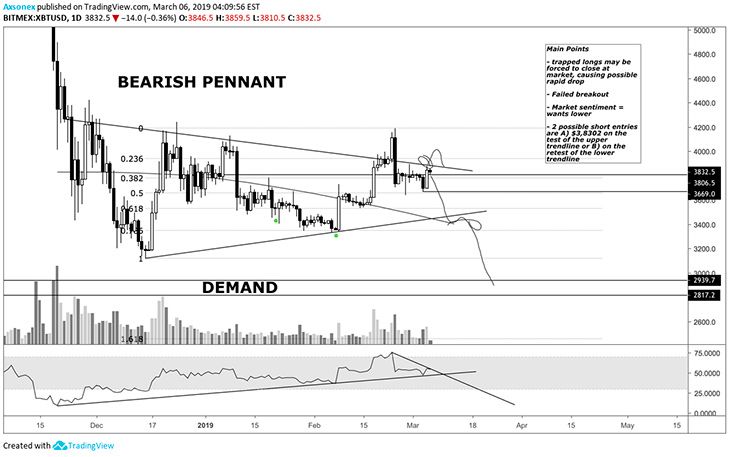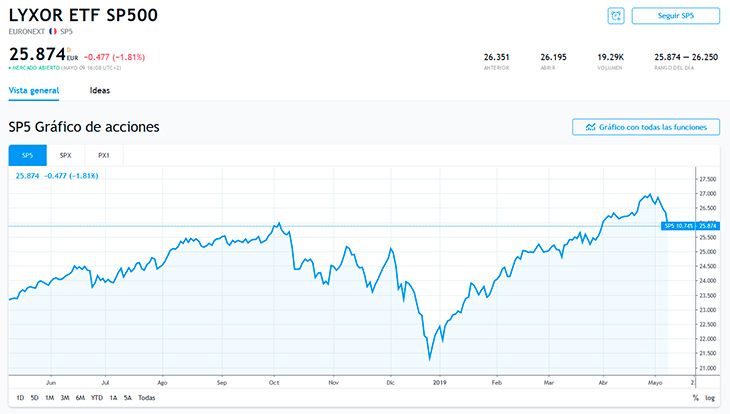Trading is a very broad, yet very specific profession that has variety affording individuals the ability to make money through various markets. Within those markets there are many trading strategies and opinions on how to best trade the market. For many, it is a very individualized approach but before you narrow down the strategy, you must start at a high level approach. There is technical and fundamental trading, but it’s within those you will find what you need. This article will go into detail regarding the style of momentum trading, which is more within the technical analysis side of trading.
What is Momentum Trading?
Momentum trading is as simple as it sounds. It is when traders utilize charts and research to find how a stock is trending, and simply ride the wave so to speak. Essentially there needs to be enough momentum in the trend for it to continue, and it is from that momentum a trader makes money.
We’ll dive into the details of how traders identify and spot trends, but you can utilize something as simple as a support and resistance level. You may think you’ve heard this before, as it is similar to swing trading, whereas momentum trading is looking to profit from the larger picture. Swing trading would be looking to profit from the smaller moves within the larger trend.
Momentum Trading vs Trend Following
According to Investopedia, momentum traders, “focus on acceleration in a stock’s price or in a company’s earnings or revenues”. One of the main differences you’ll not is the company’s earnings or revenues are mentioned. We can take Amazon as an example as they have continued to grow and expand, people have ridden the momentum to where the stock is now. Now there is likely to be profit taking along the way, the idea is as long as the fundamentals continue to show strength, a momentum trader will continue to ride along.
Trend following is when a trader simply looks at a chart, reviews a few indicators, and places a trade based on the trend. While this is a profitable strategy for some, it can be misleading if the company is posting average or less than average numbers. Also, trend trading essentially ignores the fundamental health of the company.
Now, it is unfair to state that one is better than the other, rather it should be a starting point for you to decide which elements better fit your trading needs. Momentum trading does take into account the underlying health of the company, which can unearth hidden value that a trend trader may overlook, simply due to technical not forming correctly.
Benefits and Drawback to Momentum Trading
Each trading method has their own benefits and drawbacks because each tend to focus on a certain area of the market. Technical analysis is simply utilizing the chart, while fundamental looks at the numbers of company and a lot less on the chart.
Some of the benefits to momentum trading include understanding the underlying health of the stock you selected. While the goal is to ride the momentum of the company, ensuring you have an understanding of the company is important because you want to know when the proper time to enter and exit a position is.
Another benefit is it can potentially give you quick returns as compared to passive investing. With momentum trading, you are simply looking to ride the wave until it is out of momentum, which can generate a high percentage return. While this does take a little bit of skill, it can increase the returns of your overall portfolio.
As with any system, there are some limitations to consider. The first is momentum trading does take a higher level of focus because you as a trader need to identify when the right time to enter and exit is. This is when the fundamental analysis comes in because when reviewing revenue numbers or EBITDA, you can begin to tell when a company may be dropping off or heating up. Determining this doesn’t take a quick minute, but rather a steady focus on the stock.
Another drawback to consider is when utilizing momentum trading, it can bring a higher level of risk to your portfolio. With greater risk comes greater reward, but as a momentum trader you will need to ensure your system is profitable. As quickly as a company’s momentum goes up, it can just as quickly begin to deteriorate. Having the proper exit strategy in place will not only lock in profits, but also remove your investment from a company should it not play out as expected.
Is it Possible to Outperform the S&P 500 Benchmark?
The short answer is yes, it certainly is possible to outperform the S&P 500 benchmark. Otherwise, there would be many funds and traders out of a job, simply investing in an S&P 500 index fund and calling it a day.
In a study done by Butler University, in short they found that with the proper initial investment, someone who engages in momentum trading could in fact outperform the S&P 500. While the study is quite lengthy, you can take the time to read the research and gain a full understanding of the study.
When outperforming the S&P 500, you have to keep in mind that there will be years when momentum trading may not outperform the index and that is perfectly acceptable. A wonderful time that momentum trading can excel is when the overall broad market is flat. While the overall market may be flat, there are certainly stocks and companies outperforming and generating a health return for their investors.
Keep in mind that research has proven that over the long run, passive investing does tend to generate more return. With that, momentum trading can be a wonderful way to add spice to your portfolio should you need to generate greater return. For example, from 2009 until now, the market has done extremely well and many investors have been obtaining their desired return. Looking at 2026 though individually, returns have not been as great and with momentum trading, you can look to bump up those returns by investing in individual companies.
Transaction Costs
One cost many people fail to account for until they begin are the transaction costs. This could simply be looked at as the cost of doing business, but it is something to keep in mind. Trading costs are something that can eat away at your bottom line, especially if you are a frequent investor or trader. To mitigate these costs, look for a broker that either has a special offer for initial deposits, or utilize a broker that has free trading such as Robinhood.
Also, depending on the market you trade, you’ll want to look at the bid ask spread. This is the difference between buyers and sellers in the market. The wider the bid ask spread, the more you will have to earn to recoup the spread costs. While a larger spread isn’t a deal breaker, it can be an indication of a less liquid market or lack of interest.
Lastly, keep in mind that if you short a stock you will have to pay interest on borrowing the equity. You don’t want to hold a short position too long because by doing so, you will begin to eat into your profit margin with fees for borrowing, along with any trading costs.
Is Momentum Trading Worth it?
The short answer is yes, momentum trading can certainly be worth it and add a welcomed boost to your returns. However, it must be done with diligence and care because it can also the performance of your portfolio just as much.
When starting in momentum trading, keep in mind that you’ll need to not only look at the chart, but also look at the underlying health of the company. This will require the skill of reading financials and understanding what they mean. Even if momentum trading doesn’t work out, this skill is something you can take with you and utilize in many facets of trading.
Once you’ve done that, you will need to pay close attention to your positions and monitor them for momentum continuation or stalling. Capturing the majority of the move is the goal because you can add quick returns to your portfolio, compared to traditional passive investing. Lastly, you will need to monitor your transaction costs that include trading fees and shorting interest.
All of that being said, momentum trading is certainly worth your time and can allow you to beat the S&P 500, but it isn’t for everyone. Start by opening a demo account on your preferred platform and give it a try. You may find that it can accent your current portfolio well, and generate return during a flat or less volatile market. Ensure though you don’t begin getting this strategy confused with swing trading or day trading, as these are two different trading types that require a different set of skills and tendencies. Momentum trading can yield returns but as with anything, it takes time and training.




